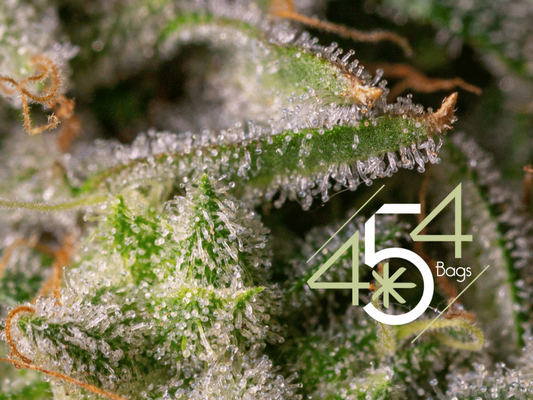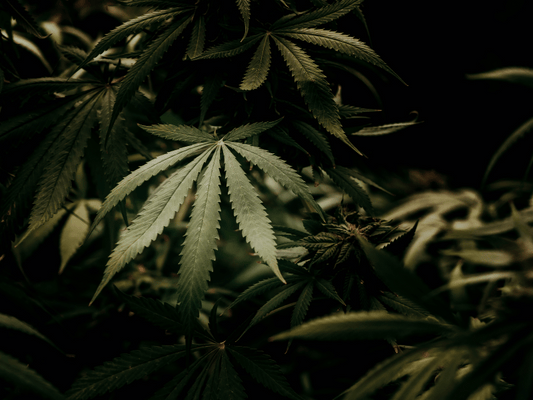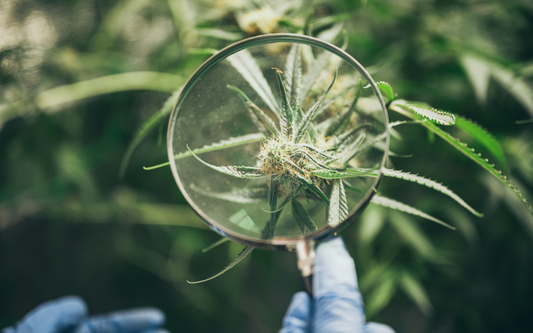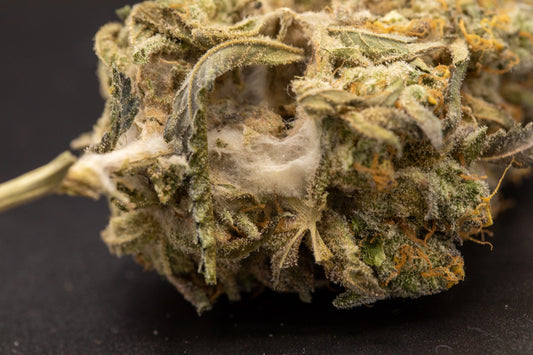Easy to order great service great product equals very happy customer
The Seven Stages of Cannabis Growth: A Comprehensive Guide to the Plant's Life Cycle

The Seven Stages of Cannabis Growth: A Comprehensive Guide
Cannabis plants undergo a remarkable journey through seven distinct stages of growth, each marked by significant physiological changes and unique care requirements. Understanding these stages is essential for successful cannabis cultivation. In this comprehensive blog, we will guide you through the seven stages of cannabis growth, providing insights into the plant's life cycle, care considerations, and key milestones along the way. Whether you're a beginner or an experienced cultivator, this guide will help you optimize your cannabis cultivation process and maximize your yields.
Stage 1: Germination
a. Seed Preparation
- Soaking seeds in water or a germination solution to initiate the germination process.
- Using a germination medium such as a wet paper towel or rockwool cubes to provide a favorable environment for seed activation.
- Maintaining proper moisture levels to ensure the seeds don't dry out or become waterlogged.
b. Root Development
- The emergence of the taproot, which is the primary root structure that grows downward into the soil.
- Formation of secondary roots branching out from the taproot, establishing a foundation for nutrient uptake.
Stage 2: Seedling
a. Cotyledon Growth
- Development of the first pair of round, seedling leaves (cotyledons) that provide initial nutrients to the plant.
- Cotyledons gradually expand and turn green as they carry out photosynthesis.
b. Early Leaf Development
- Growth of the first set of true leaves, which are serrated and characteristic of cannabis plants.
- The plant transitions from a seedling to a young plant as it develops these true leaves.
Stage 3: Vegetative
a. Leaf Expansion
- Continued growth of leaves and branches, focusing on building a strong vegetative structure.
- Leaves become increasingly larger and more numerous, allowing for increased photosynthesis and energy production.
b. Root Development
- Establishment of a robust root system to support nutrient absorption and overall plant health.
- Increased root branching and elongation to explore a larger soil volume for water and nutrient uptake.
Stage 4: Pre-flowering
a. Sexual Differentiation
- Development of pre-flowers that allow for the identification of plant sex (male or female).
- Male pre-flowers form clusters of small pollen sacs, while female pre-flowers have small hair-like structures called pistils.
b. Heightened Growth
- Increased vertical growth as the plant prepares for the forthcoming flowering stage.
- The plant focuses on developing a strong and sturdy stem to support the weight of flowers during the flowering phase.
Stage 5: Flowering
a. Bud Formation
- Development of flowers (buds) rich in cannabinoids and aromatic compounds.
- Buds start as small clusters of white hairs (pistils) that eventually grow and densely pack to form resinous, aromatic flower clusters.
b. Pollination (if applicable)
- Fertilization of female flowers by pollen from male plants, leading to seed production.
- Controlled pollination can be done to create seeds, but many growers prefer to prevent pollination to encourage seedless bud production.
Stage 6: Ripening
a. Trichome Development
- Maturation of trichomes, the resinous glands responsible for producing cannabinoids and terpenes.
- Trichomes change color from clear to milky or amber, indicating the optimal time for harvest based on desired effects.
b. Harvest Window
- Determining the ideal time to harvest based on trichome color and desired effects.
- Harvesting too early may result in less potent buds, while harvesting too late may lead to a more sedating or couch-lock effect.
Stage 7: Harvest
a. Harvesting Techniques
- Proper techniques for cutting, trimming, and drying cannabis flowers to preserve their quality.
- Cutting the main stem, followed by trimming away excess leaves and branches to focus on the buds.
b. Curing and Processing
- The essential process of curing harvested buds to enhance flavor, aroma, and smoothness.
- Drying the buds slowly in a controlled environment, followed by storing them in airtight containers to allow for further maturation.
Understanding the seven stages of cannabis growth is vital for successful cultivation. Each stage brings unique challenges and requirements. By familiarizing yourself with the plant's life cycle, physiological changes, and care considerations, you can optimize your cannabis cultivation process and achieve desired yields. From germination to harvest, the journey of a cannabis plant is a fascinating one that rewards cultivators with a bountiful and high-quality harvest.
No comments








0 comments